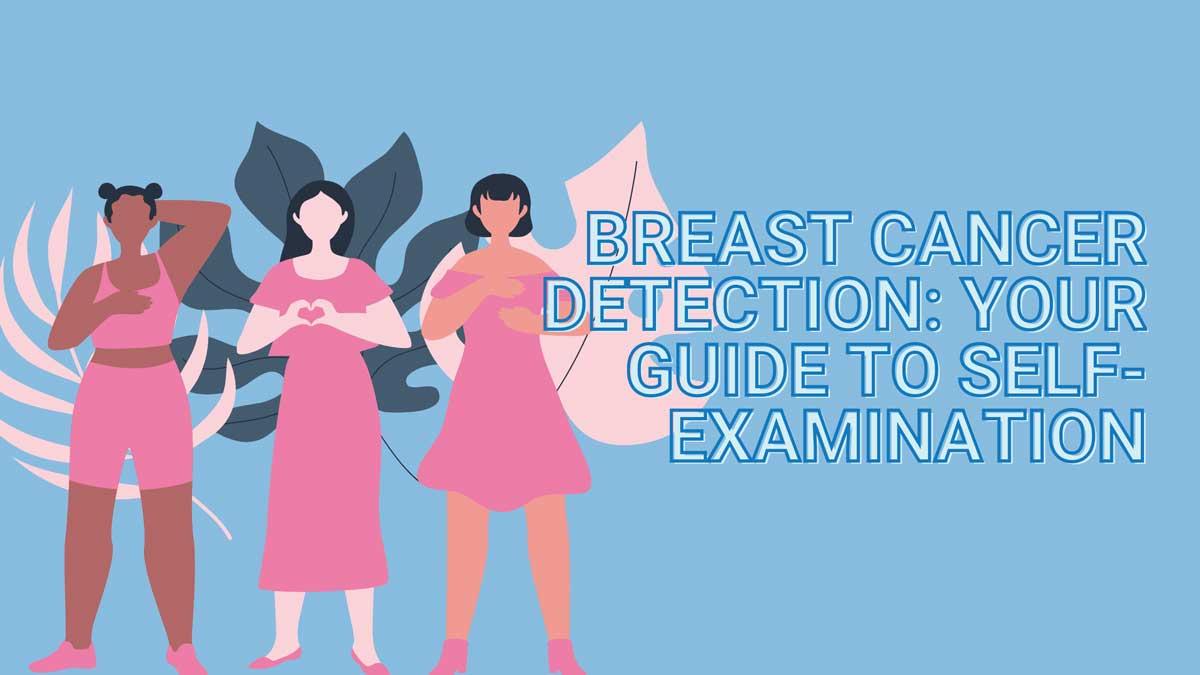
- Blog /
- August 18, 2021
Breast Cancer Detection: A Proper Guide to Self-Examination
Knowing what is expected when it comes to your breasts is important if you want to detect any irregularities. You can later consult with your doctor regarding these irregularities. A breast self-exam is a way to check for any changes, like thickenings or lumps, and should be done every month. If detected early, breast cancer has a higher chance of being treated, which improves the survival rate.
Although breast self-exams are an effective way to point out any abnormalities, they should still not be replaced with yearly screenings performed by a specialist. Breast cancer screenings are an effective way to detect cancer in its early stages. Make sure you get a breast screening on an annual basis, especially if you are above the age of 40.
What are the Steps to Do a Thorough Breast Self-Exam?
Step #1
As you start your self-examination, know that breasts unequal in size are nothing to worry about. What you should be looking for are any changes in the shape, size, or skin texture. Pay special attention to sores, discoloration, or dimpling.
Start by using your left hand on your right breast, then switch. Use the pads of your three fingers to press each area of your breast. In a circular motion, apply light, then medium, and then full pressure to check for any thick spots, lumps, or any other changes. Next, press the tissue under your arms and feel for any changes.
Step #2
Check your nipples and squeeze them to see if there is any discharge. Pay extra attention to any peeling, sores, a change in direction, or a nipple that has become inverted (gone inward rather than pushing outwards).
Step #3
Place your hands on your hips and firmly press to flex your chest muscles. Examine to see if you detect any changes. Move from side to side to notice any irregularities in your breast profile. Lift your breasts up and properly examine the under areas.
When to Call Your Doctor after Finding Something Unusual with Your Breasts
After you perform your self-examination, if you notice a lump or any other unusual sightings, keep your cool. Most breast self-exams are not always accurate, so you should wait for the results of proper screening. However, you should still get in touch with your doctor if you notice the following:
- A change in the visual appearance, size, or feel of the breasts
- A visual change in the nipple size or position
- Puckering or dimpling of the skin around the breast or underarm area
- Thick spots, hard knots, or any sort of lumps in the breast
- Inverted nipples
- Nipple discharge
- Nipple rash
- Swelling of either or both breasts
- Redness, dark spots, or warmth on the chest skin
Remember, Breast Self-Exam Is not the Final Answer
A breast examination performed at home with little medical knowledge is not the same as an exam performed by a doctor. Though it is an important supplement in cancer detection, it is not a replacement for professional examinations. Remember that additional tests will be necessary to detect the nature of any lumps or changes. Consult with your doctor regarding the best screening guidelines for you, especially if you are 40 or above.
Overall, breast self-exams are still very much needed for minimizing disease damage. Incorporating a monthly breast self-exam is essential to maintain your good health and detect early symptoms of cancer.
Sources:
https://www.breastcancer.org/symptoms/testing/types/self_exam
https://my.clevelandclinic.org/health/diagnostics/3990-breast-self-exam
https://www.mayoclinic.org/tests-procedures/breast-exam/about/pac-20393237
